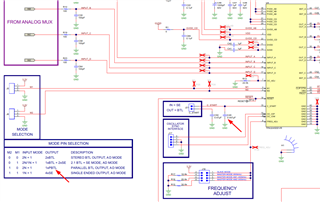Other Parts Discussed in Thread: TAS3251
Hi -
I'm working on a design that employs the TPA3245 in pre-filter PBTL mode. In regards to the C_START capacitor, I see this conflicting instruction from the following sources:
Oct 2016 Datasheet: 470nF
Jan 18 2018 SLVUAT6A: 470nF
"TPA3245 Setup Guide & Configuration Tool" spreadsheet configured for pre-filter PBTL: 10nF
All of these are the most recent versions as far as I can tell. A 10nF cap is substantially different from 470nF - which is correct? I'm inclined to use the larger one as I don't mind a longer startup time, and I see it in two out of the three sources, but thought I'd check to be certain.
Thanks,
Josh




